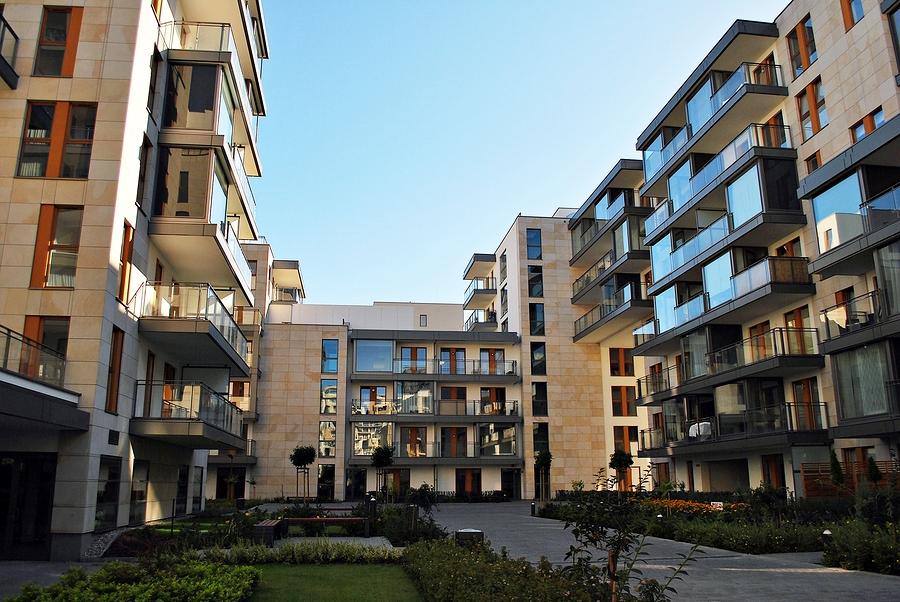So you want to be a successful real estate investor and build a multifamily portfolio of properties. Well, investing is more than just handing over the cash and becoming a property owner with passive income. It involves logic and cost-analysis. You have to determine whether or not an investment will yield the profits you want. Here’s just how to do that.
7 Key Metrics for Building A Profitable Multifamily Portfolio of Properties
1. Quality of asset
When considering a multifamily property, you want to determine its quality which is based on a classification. Classifications grade a property based on a combination of geographical and physical characteristics, which help determine the level of risk or the possible amount of return associated with acquiring the property.
- Class A: The highest quality buildings in their market and area. They’re usually built within the past 10 years, have the newest and latest amenities, and high-income earning tenants. Class A properties command the highest rent and the highest price per square foot. They’re typically found in central business districts (CBDs) or sometimes in Class B areas. Class A properties are typically professionally managed and have little to no deferred maintenance issues.
- Class B: One step down from Class A properties and are generally older. They tend to have lower-income tenants and lower rents than Class A buildings and are not always professionally managed. These older properties may have some deferred maintenance issues but are mostly well-maintained. Class B properties are often seen as “value-add” properties that can be upgraded to Class B+ or sometimes Class A with renovations, updated amenities and improvements.
- Class C: Typically more than 30 years old and located in economically depressed locations. Class C properties are generally in need of renovation and have dated amenities. They are usually located in low- to middle-income areas and rents are below those of Class B properties.
- Class D: Well over 30 years old and located in fringe markets. Class D properties are usually in need of extensive renovation and offer no amenity packages to residents. They are usually tenanted with a more transient demographic and can be operationally challenging without the proper management know-how and experience.
As you decide on the right multifamily property to invest in, consider the one that has the lowest level of risk and the highest amount of return, which are typically Class A, B and C properties. Building classification will also be a determining factor in your ability to obtain financing for the property.
2. Market conditions
The multifamily real estate market is constantly changing. So if you’re looking to invest, you need to know what the current market conditions are to determine if it will be profitable for you. You have to consider things like supply vs. demand, demographics, position in real estate cycle, population, and employment growth. These factors play a huge role in the success of your multifamily investment venture.
3. Current and future property repair costs and maintenance expenses
Not all properties are made equal. Some are in great condition, while others may need extensive repair and maintenance. While acquiring a property in poor condition may seem like it’s better for your pockets, understand that repair and maintenance costs add up.
You may find some hidden gems on the market that may need sprucing up and bring in great income, but it’s important to do a cost-analysis first to see if the property you’re considering will be worth the investment in the long run.
4. Multifamily portfolio diversification
Diversification is crucial to your real estate investing portfolio. It involves investing in different types of assets and in different geographic locations. This minimizes your portfolio’s overall risk because it lessens the impact you’d see from a single asset loss. This is especially helpful if your deals outperform or underperform based off your original projections. Here are some examples of a diversified portfolio:
- Single assets in multiple locations: You might choose to invest in apartment buildings in Denver, Atlanta, and Portland.
- Multiple assets in a single location: You own a fourplex, several single-family properties, and a small apartment building in a single market or its suburbs.
5. Value-add opportunities
Value-add properties are great real estate investments because they can give you higher returns after increasing income with physical upgrades, better management, and added services and amenities. These features can lead to forced appreciation of the property, meaning it increases in value.
An infusion of capital into value-add properties can attract new tenants, help retain existing tenants, and generate higher rents, which can do wonders for your cashflow.
6. Multifamily portfolio sensitivity (risk) analysis
When performing a sensitivity analysis on a multifamily portfolio, you’re trying to figure out how different factors might affect each property’s returns and how a change in each factor would affect profits. Essentially, sensitivity risk analyses help you figure out the worst-case scenario for investing in a particular property and for weeding out non-performing properties.
A sensitivity analysis helps you answer questions like:
- What’s the lowest rent can I charge, and can I still return a profit?
- At what vacancy rate will I start losing money?
- What happens if interest rates go up or down?
- What if demand for my asset or market goes up or down?
7. Compare property metrics
Once you’ve performed analyses on the properties you’re thinking about investing in, it’s time to sit down and compare the potential risks against the potential returns.
What properties are the least risky? Which ones are the riskiest? Are they risks you’re willing to take? Are you almost certain you’ll get a return? That your assets will appreciate in value? These are questions you want to ask yourself as you decide which investment property will be the most profitable.
Review and compare each of the following metrics for every property in your multifamily portfolio and for those you’re thinking about acquiring:
- Cash on cash return: Ratio of annual before-tax cash flow to total cash invested.
- Return on investment (ROI): Gain or loss relative to amount invested.
- Net operating income (NOI): Total revenue from rents and any additional income sources after all operating expenses such as insurance, property taxes, and maintenance costs have been deducted.
- Capitalization rate (cap): Assumed, unleveraged rate of return (cash) before mortgage payments and income taxes.
- Debt service coverage ratio (DSCR): Measurement of the cash flow that is available to pay the property’s current debt obligations.
- Expense ratio: Property expenses as percentage of gross operating income.
If these metrics intimidate you, don’t worry. They intimidated us when we first started too. That’s why we offer consulting and mentoring services for multifamily real estate investors who want to get their feet wet but are afraid that the water’s too cold. Or who want to go bigger, faster. Contact us today so that we can help you dive right in!
Learn more:
Scale Your Multifamily Portfolio with a SWOT Analysis
7 Crucial Property Valuation Tips for Buying an Apartment Complex
How (and Why!) You Should Track the Crazy Multifamily Real Estate Market
Latest posts by Theresa Bradley-Banta (see all)
- Multifamily Common Areas Maintenance & Management Tips - March 31, 2020
- 8 Tenant Gift Ideas That Will Boost Your Bottom Line - November 11, 2019
- Need a Package Delivery System at Your Multifamily Rental Property? - October 28, 2019



